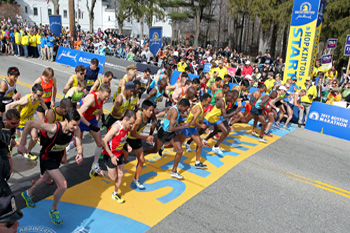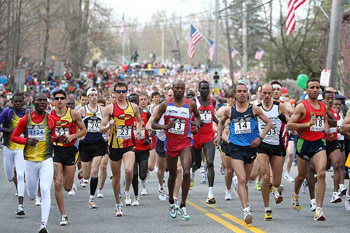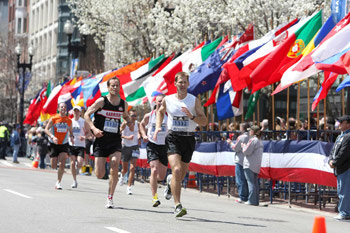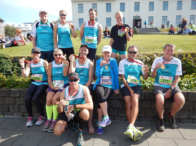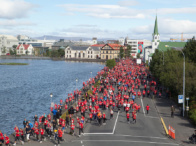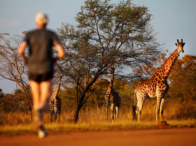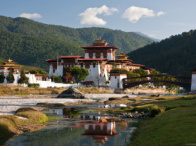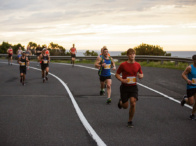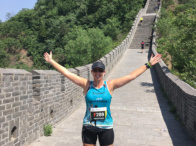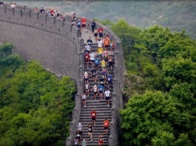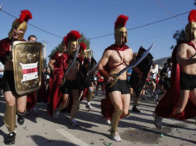Boston, New York, Chicago, London, Berlin. Of all the major marathons around the world the one I’ve always wanted to do is Boston. The world’s longest continually held race. The one with the strictest qualifying times outside of the Olympics. 2012 would be the 116th Boston Marathon and would include me as one of 27,000 runners entered.
Not having travelled to mainland USA before, I was pleased to see that Boston as a city is modern, pretty and wonderfully well-preserved but with a small-town feel. Cute 19th century brownstone buildings line the streets. The days when those same streets were lit by lanterns can easily be imagined.
The marathon is a huge event for the city. Everywhere you walk there are lean-looking people wearing compression gear, event clothing and fluoro shoes as fashion items. You can easily spot the other runners around town, as with 27,000 people entered, they are everywhere. The atmosphere around town is exciting as people get ready to be part of the world’s oldest race.
The Course
The Boston Marathon is a point-to-point run, starting in a town called Hopkinton and finishing in one of the main streets in Boston. Hopkinton, which happens to be 26.2 miles west of Boston, is a picture perfect town with houses which remind you of any movie set in rural New England. The race itself winds through a number of other scenic towns before getting to the city of Boston. For most of the way the run is along a two-lane road. It is only towards the end that the course expands into wide city streets.
The run is net downhill, but it’s not generally known for being a fast course. There are a number of hills in the second half of the course, with the most notable being the last one, known as Heartbreak Hill. These hills are between miles 15 and 20. This is where the race would start to get tough and test out everyone.
The Weather
North American weather can be fickle in April. When I left Sydney I’d seen a 7-day forecast for Boston, and the temperature for race day was looking to be 6 (min.) to 16 (max.), perfect running conditions. By the time I’d arrived, the forecast had been radically amended and Monday was to be the centre of a one-day heatwave. I wouldn’t be needing any of the cold weather clothes I’d packed in anticipation of it being cold at the start. The Mayor of Boston spoke publicly requesting runners not to run & the BAA took the unusual step of allowing runners to defer their entry to next year because of the forecast hot conditions. That would have been generous for the local runners, but was not much of an option when you’ve already booked flights and planned a holiday around the race. At the same time, the BAA told us by email that “THIS IS NOT A RACE. It is an experience” (their capitals) and advised us to consider running significantly more slowly than normal.
The day of this year’s race turned out to be 31 degrees (or 89 Fahrenheit in their language). It was almost 11am before I crossed the start line, so I knew that I was in for a hot day for the duration, however long that would be. What I couldn’t find was any shade the entire way. Even though some of the course is through the countryside, the trees had come out of their cold winter and were devoid of leaves.
The organisers did their best with drink stations at every mile and misting tents, which is like running through a car wash but without the washers.
The Spectators
The race is always held on Patriots’ Day, which is a state-wide public holiday in Massachusetts. Being a public holiday and the biggest event in town, spectators were lining the streets from start to finish.
What I noticed about the crowds is that they are very loud and they will cheer on absolutely everyone, especially complete strangers. Many runners had their names on the front of their shirt so that people could cheer them especially.
I ran in a canary yellow Wallabies singlet (with Qantas’ name and logo on the front as the sponsor) and green Socceroos shorts. Now, I thought that was as Aussie as I could get. But it appears that Australian green and gold are not very well known in the north-east of America. I heard more shouts of “you go Qantas” than “come on Aussie”. I think that most people thought that my name was Qantas.
Having said that, the crowds really were fantastic. Their support was phenomenal, and so many were there with garden hoses, oranges, ice and wet towels for the runners. This was in addition to what had been provided by the organisers.
The Race
I was expecting the field to be around 27,000 runners. This would easily be the biggest race I have ever been a part of. Later I’d find out that many people made the decision not to run and only around 22,500 started the race. Even so, the feeling of being part of the mass of runners all heading in the same direction for so long was amazing.
Given the logistics of getting that many runners transported to the start line, the race doesn’t start until 10am. With the heat, all plans of a PB were out the window. Having run Sydney Marathon last year in similar heat I had some idea of what to expect and aimed to take it slowly. I was optimistically thinking that an extra 10 minutes on top of my 3:30 goal time might be a realistic new target.
As most of the first half is downhill, I tried to conserve my energy for the later stages. A fairly constant 5:15 per km pace got me to halfway in 1 hour 50. Unfortunately, my speed went downhill after around 25km.
It was the heat that got to me more than the hills. The last hill, Heartbreak Hill, is not as steep as the one in Sydney’s City2Surf, but is much harder being at the 20mile stage of a marathon compared to 4km into a 14km fun run. The hills at Boston do slow you down but they are runnable, but the heat was far worse.
I ended up running/walking the last 10km. I’d pick a marker in the distance and run to that, then walk for a bit. The last 10km was where my time blew out, but I probably would have been looking at around 3:50 even without the walking. A lot of that last 10km was a blur, with me hoping that the next mile marker would come around quickly so that there was another drink station (and a chance to walk and not be passed). The crowds were so loud over that section that there was no way you would stop and walk off the course there. In the end I do remember seeing the Citgo sign which meant we were near the city and the last few streets before the finish.
After crossing the finish line I liked the irony of the heat blankets were provided – these are usually used to protect finishers from hypothermia. I was glad that the Westin Copley Hotel organised by Travelling Fit was literally around the corner from the finish. Even though I could barely walk I knew I could make it that far back to the comfort of the hotel.
The Aftermath
One day later, the newspaper headlines were calling it a ‘survival race’ and I don’t think they are exaggerating. One reporter who ran the race noted that everyone was probably going 20 to 40 minutes slower than they thought they would be. The winning time was 2:12:40, much slower than 2011’s fastest ever run of 2:03:02. My own finishing time was a personal worst of 4:01, but it still put me in the top half overall, which gives some indication how tough it was for everyone.
Afterwards I saw one comment on facebook from a friend that said “congratulations. Forget about the time. You can now say that you have achieved something very few do.”
Having now run Boston and been a part of their long history, it’s time to enjoy the rest of the holiday. Boston is where there’s Harvard University, famous art galleries, and some modern American culture (eating hot dogs and popcorn while watching a Red Sox game at the 100-year old Fenway Park). Then it’s down to New York to see other world famous sights.
Cheers from Boston.

